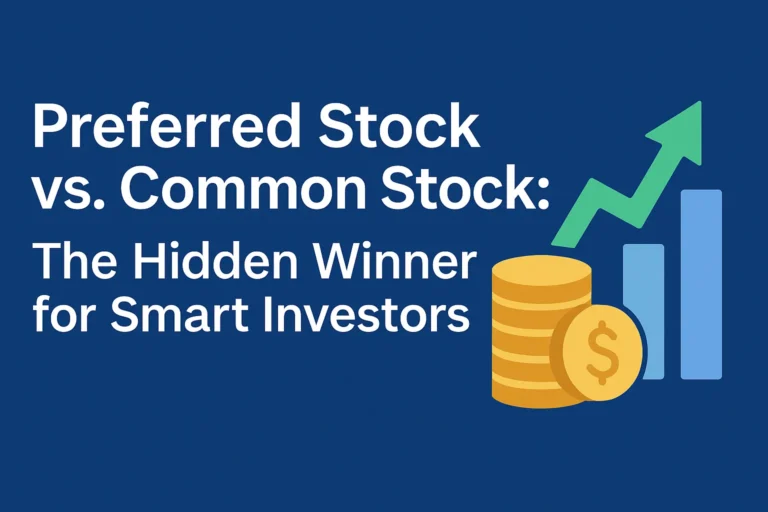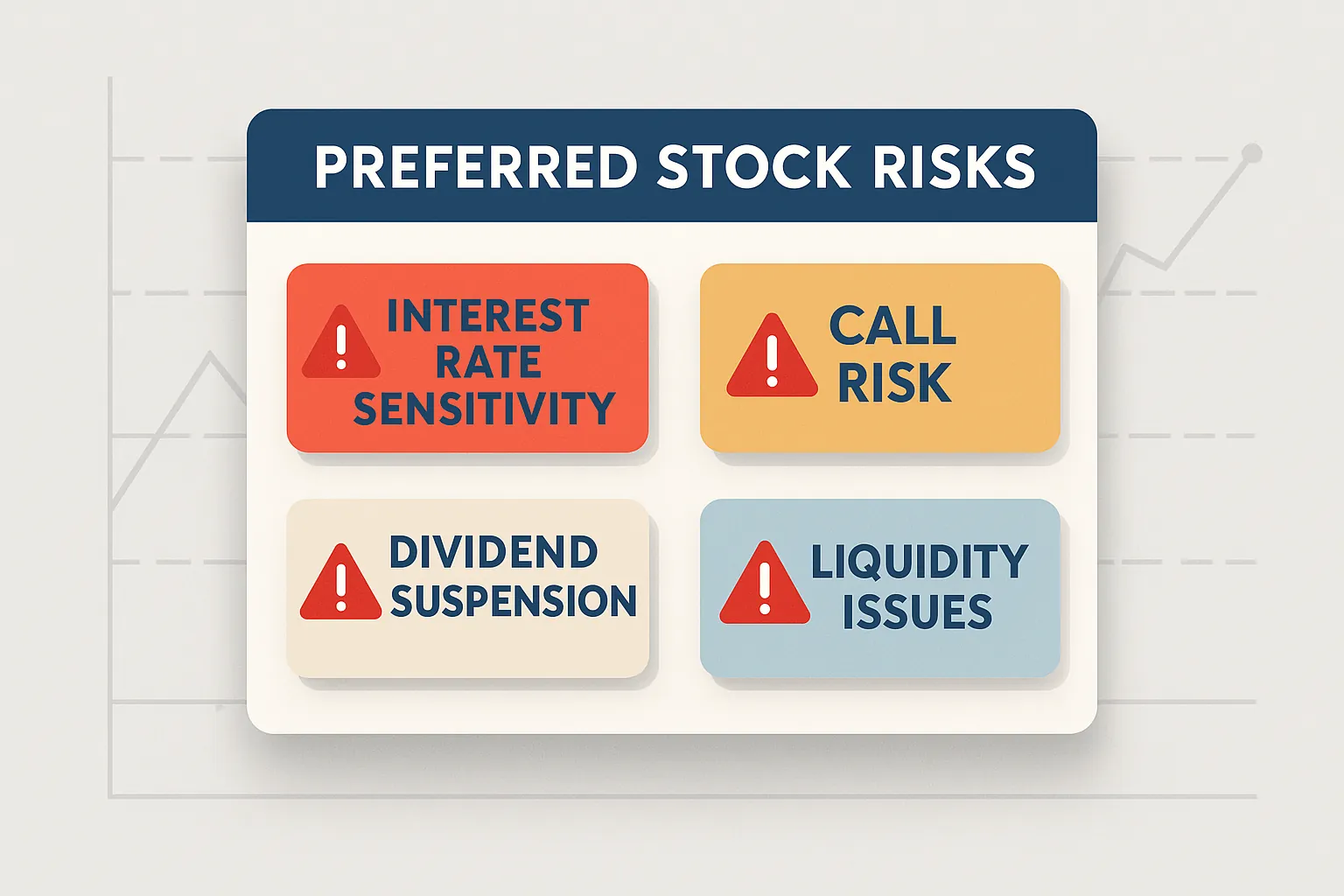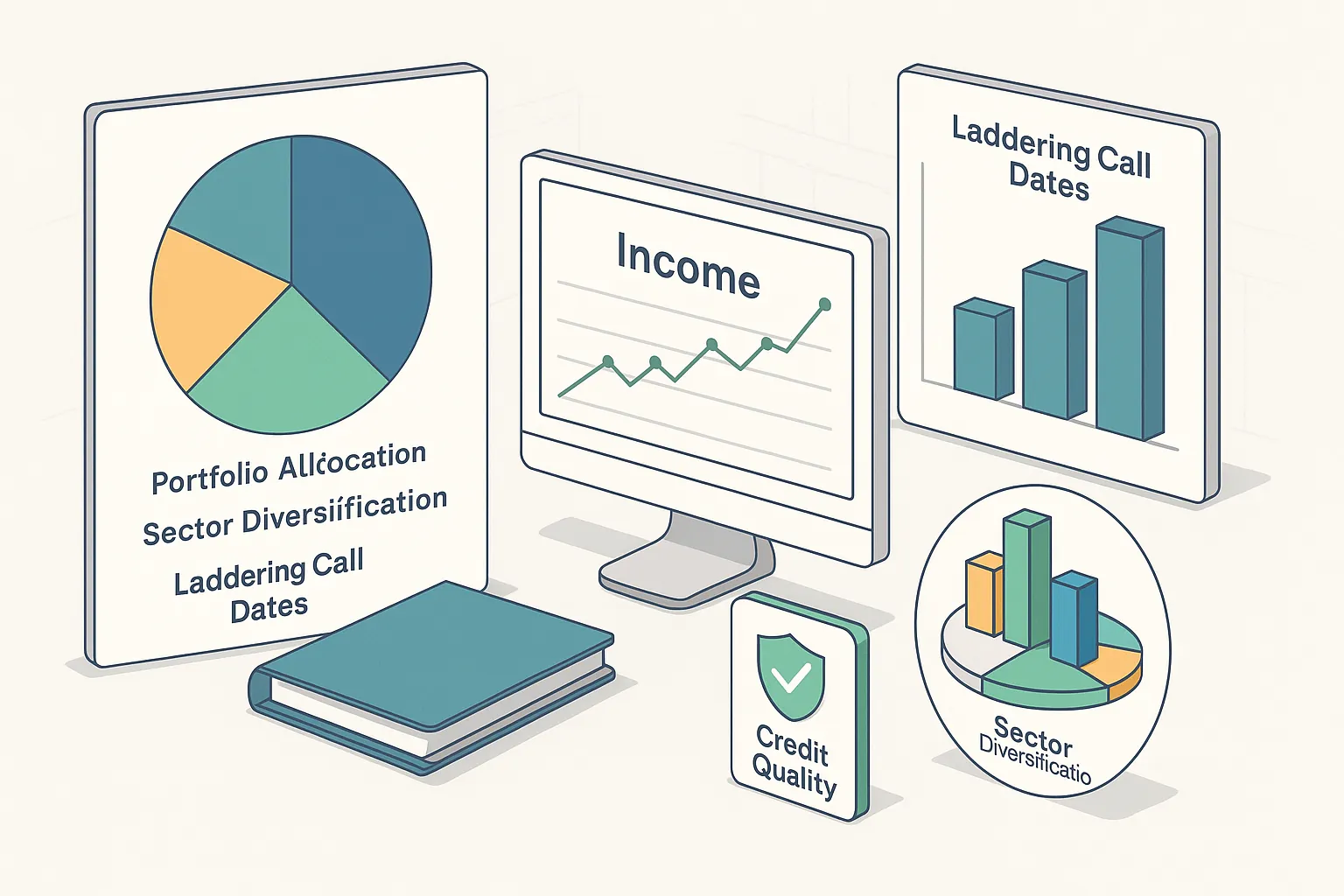
Preferred Stock vs. Common Stock: The Hidden Winner for Smart Investors
Table of Contents
- Introduction – Why This Debate Matters for Investors
- Understanding the Core Differences
- Why Preferred Stock Can Be a Hidden Winner
- Risks & Drawbacks You Must Consider
- Real-Life Case Studies & Market Examples
- Expert Opinions & Actionable Investment Strategies
- FAQ & Key Takeaways
Introduction – Why This Debate Matters for Investors
When most people think of investing, they immediately picture common stock — the standard shares of ownership that dominate the headlines. However, tucked away in the financial world is another option: preferred stock, a type of equity that combines features of both stocks and bonds.
Many investors overlook preferred stock simply because it isn’t as glamorous or as frequently discussed. Yet, for the smart investor looking for stable dividends, reduced volatility, and priority over common shareholders in certain situations, preferred stock can be a game-changer.
Why It Matters in Today’s Market
In an era where interest rates fluctuate and market volatility keeps investors on edge, understanding the differences between preferred and common stock can open up opportunities for more predictable income and potentially safer long-term growth. Preferred shares often pay fixed dividends, which can be significantly higher than the yields on common stock.
If you’re building a diversified portfolio, preferred stock can complement your holdings — much like adding new asset classes to spread risk and maximize returns.
Preferred Stock in a Nutshell
Preferred stock grants you partial ownership of a company, much like common stock, but with added benefits such as priority dividend payments and higher income potential. It’s particularly appealing if your primary goal is steady cash flow rather than aggressive capital gains.
- Preferred stock can offer higher dividends than common stock.
- It’s less volatile and provides priority in liquidation scenarios.
- Ideal for income-focused investors and portfolio diversification.
Understanding the Core Differences
To invest with confidence, you need a crisp, side-by-side look at how preferred stock and common stock actually work in the real world. If you’re new to equities, start with this primer on what stocks are:contentReference[oaicite:0]{index=0}, then deep-dive into forms of stocks: common vs. preferred:contentReference[oaicite:1]{index=1}.
Quick Comparison: Preferred vs. Common
| Feature | Preferred Stock | Common Stock |
|---|---|---|
| Ownership & Voting | Ownership, usually no voting rights | Ownership with voting rights |
| Income (Dividends) | Typically higher, often fixed or stated | Variable and not guaranteed |
| Priority of Claims | Priority over common for dividends & assets | Lower priority in payouts |
| Price Volatility | Generally lower (rate-sensitive) | Generally higher |
| Upside Potential | Moderate (income-focused) | Higher (growth-focused) |
| Special Features | May be cumulative, convertible, or redeemable | Fewer structural features |
- Higher dividend yields than many common shares.
- Priority in dividend payments and liquidation.
- Potential features like cumulative or convertible shares.
- Can reduce portfolio volatility when paired with common stock.
- No voting rights in most cases.
- Interest-rate sensitivity can pressure prices.
- Issuer may call (redeem) shares, capping upside.
- Less capital appreciation potential than common stock.

If you’re weighing income vs. growth, revisit the principles behind valuing a stock’s real worth:contentReference[oaicite:2]{index=2} and how trading volume can affect price:contentReference[oaicite:3]{index=3}. These fundamentals help you decide when preferred stock’s steady dividends beat the potential upside of common shares.
Why Preferred Stock Can Be the Hidden Winner
For income-focused investors, preferred stock often strikes the sweet spot between yield and stability. It usually provides higher, contract-like dividends than common shares, sits ahead of common stock in the payout line, and tends to be less volatile because prices are anchored by dividend expectations.
1) Income First: Higher, More Predictable Yields
Unlike most common stock dividends—which are discretionary—preferred dividends are typically stated and often significantly higher. That makes them attractive for those building a reliable cash-flow plan or a dividend income strategy:contentReference[oaicite:0]{index=0}.
If a preferred share pays a fixed $1.75 annual dividend and trades at $25.00, its current yield is 7.0%. If the price drifts down to $23.50 (rates up, market jittery), the same dividend implies a 7.45% yield. This yield anchor is one reason preferred prices often fluctuate less than growth-focused common shares.
2) Priority of Payment: Getting Paid Before Common
Preferred shareholders generally receive dividends before any common stock dividends are paid. In a wind-down or liquidation, they also have a higher claim on assets than common shareholders (though still below bondholders). This priority can reduce downside severity during tough cycles.
3) Structural “Boosters”: Cumulative, Convertible, Redeemable
- Cumulative: Missed dividends accrue and must be paid before common dividends resume.
- Convertible: Ability to convert into common shares can add option-like upside when the issuer’s common stock rallies.
- Redeemable (Callable): May be redeemed by the issuer—this can cap upside, but issuers often pay a premium at call dates.
For portfolio design, these levers let you target income, stability, or selective upside depending on your objectives and risk tolerance. For broader portfolio context, revisit diversification basics:contentReference[oaicite:1]{index=1}.
4) When Preferreds Outshine Common
- Income Priority: When you want dependable cash flow—e.g., supplementing salary or retirement distributions.
- Rate Stabilization: In moderate-rate environments where yields remain attractive versus bonds or common-stock payouts.
- Drawdown Defense: During equity drawdowns, preferreds’ yield support can help soften the blow relative to volatile common shares.
- Screen by credit quality and call dates to avoid avoidable call risk and weak issuers.
- Mix structures (cumulative + convertible) to balance income with optional upside.
- Mind interest-rate sensitivity: preferred prices can drift when rates rise rapidly.
To align preferreds with your broader plan, refresh the fundamentals of valuing a stock:contentReference[oaicite:2]{index=2} and how volume influences price behavior:contentReference[oaicite:3]{index=3}—useful when evaluating conversion terms and market liquidity.
The Risks & Drawbacks You Must Consider
Preferred stock can be a hidden winner for income stability, but it’s not bulletproof. Below are the key risks to understand—and practical ways to manage them—before you allocate serious capital.
1) Interest‑Rate Sensitivity
Because many preferreds pay fixed dividends, their prices tend to move inversely with interest rates. When rates rise quickly, preferred prices can fall as investors demand higher yields. Balance this risk by laddering purchases over time and focusing on issuers with strong credit quality.
2) Call (Redemption) Risk
Issuers often retain the right to call preferreds at or after a specific date—frequently near par value (e.g., $25). If rates decline or the issuer can refinance more cheaply, you might lose potential upside when shares are redeemed. Mitigate this by reviewing call schedules and avoiding issues that are trading well above likely call prices.
3) Dividend Deferral or Suspension
Dividends on preferred shares are not guaranteed. With cumulative preferreds, missed dividends accrue—but you still face timing uncertainty. With non‑cumulative issues (common in financials), unpaid dividends may be gone for good. Learn to spot red flags in headlines and filings—use guides like how to identify bad stock news:contentReference[oaicite:0]{index=0} and practice filtering noise with news‑noise reduction techniques:contentReference[oaicite:1]{index=1}.
4) Limited Voting Rights & Lower Upside
Most preferreds come with no voting rights and typically provide less capital appreciation than common stock. If you seek maximum upside and influence over governance, common shares may suit you better. Re‑ground your expectations with a refresher on the real value of a stock:contentReference[oaicite:2]{index=2}.
- Diversify issuers/sectors to avoid concentrated credit risk.
- Ladder call dates and prefer issues with reasonable call protection.
- Favor stronger balance sheets; review coverage ratios and ratings where available.
- Mix structures (cumulative, convertible) to balance income with flexibility.
- Non‑cumulative financial preferreds during stress cycles.
- Issues trading far above par near call dates.
- Thinly traded issues where liquidity can vanish.
- Rapid rate spikes that compress fixed‑coupon valuations.

For context on how trading styles affect risk, compare day trading vs. swing trading:contentReference[oaicite:3]{index=3} and why certain brokers restrict strategies like hedging in specific accounts (why some brokers don’t allow hedging:contentReference[oaicite:4]{index=4}).
Real-Life Case Studies & Market Examples
The best way to understand the strengths and limits of preferred stock is to see how it performs in real-world market conditions. Below are two case studies—one modern and one historical—that show why preferreds can be the hidden winner in certain scenarios.
Case Study #1: Bank of America — BAC Preferreds vs. Common
Bank of America offers multiple preferred stock series such as BAC-A, BAC-C, and BAC-D, each with its own dividend rate and call schedule. During volatile years, these preferreds often held their value better than BAC common stock, while continuing to pay dividends.
In 2020’s pandemic crash, BAC common stock fell over 40% at its worst, while certain BAC preferreds dropped less than half that amount. Income-focused investors who held preferreds continued to receive their quarterly dividends—critical for maintaining portfolio cash flow. For more on how major banks move in rate-sensitive environments, see our coverage of bank stocks after Fed rate cuts:contentReference[oaicite:0]{index=0}.
Case Study #2: The 2008 Financial Crisis
During the 2008 global financial crisis, common equity markets were devastated—many bank stocks fell over 70%. However, certain investment-grade preferreds, especially those from highly capitalized banks and utilities, maintained a significant portion of their value and continued paying dividends.
For instance, preferreds issued by Wells Fargo and JPMorgan saw smaller drawdowns than their respective common shares. Investors who held them avoided panic selling and maintained cash flow while waiting for recovery.
Understanding historical drawdowns and recovery paths is key when pairing preferreds with other holdings like penny stock alerts:contentReference[oaicite:1]{index=1} or high-growth tech equities—two areas where volatility runs high.
Expert Opinions & Actionable Investment Strategies
While preferred stock offers unique advantages, how you deploy it within your portfolio matters just as much as understanding its mechanics. We asked two seasoned financial advisors for their views on how to incorporate preferreds into a balanced investment plan.
Strategic Ways to Use Preferred Stock
- Ladder by Call Dates: Spread holdings across issues with staggered call dates to avoid concentrated reinvestment risk.
- Sector Diversification: Combine financial, utility, and industrial preferreds to smooth out sector-specific volatility.
- Convertible Allocation: Keep a small allocation to convertible preferreds for optional upside during equity rallies.
- Credit Quality Filter: Focus on investment-grade issuers to minimize default risk.
For more on building a balanced equity-income mix, see our guide to diversifying your stock portfolio:contentReference[oaicite:0]{index=0} and compare this approach to swing trading strategies:contentReference[oaicite:1]{index=1} for more aggressive, short-term plays.

- Blend income and growth components in your portfolio to avoid over-reliance on fixed-rate preferreds.
- Revisit issuer credit metrics quarterly—ratings changes can affect market pricing quickly.
- Consider tax implications—qualified vs. non-qualified dividend treatment can impact net yields.
FAQ & Key Takeaways
Before you commit to adding preferred stock to your portfolio, it’s worth answering the most common investor questions. This section wraps up the discussion with clear, concise answers and top-level insights you can apply immediately.
Frequently Asked Questions
Q: Is preferred stock safer than common stock?
A: In terms of income stability and payout priority, yes. But it’s still equity, meaning it can lose value in market downturns.
Q: Can I sell preferred stock anytime?
A: Yes, as long as there’s market liquidity. However, many preferreds trade on lower volume, so bid-ask spreads can be wider.
Q: How are dividends on preferred stock taxed?
A: Some preferred dividends qualify for favorable tax rates, while others are taxed as ordinary income. Always confirm the tax status before buying.
Q: When is the best time to buy preferred stock?
A: Preferreds can be attractive when interest rates are stable or falling, and when you find issues trading below par with solid credit ratings.
For more on how to align dividend income strategies with market timing, check out our dividend income guide:contentReference[oaicite:0]{index=0} and revisit the basics of what stocks are:contentReference[oaicite:1]{index=1}.
- Preferred stock blends income stability with some equity features, making it a hybrid asset class.
- It offers priority dividends and higher yields, but comes with interest rate and call risks.
- Best suited for income-focused investors who can manage liquidity and credit quality considerations.
- Diversifying across issuers, sectors, and structures helps mitigate the biggest risks.
- Pairing preferreds with common stock can create a more resilient portfolio.
If you’re ready to explore adding preferred shares to your portfolio, start by researching well-rated issuers, reviewing call schedules, and comparing yields to alternatives. For active trade ideas and market alerts, visit our Daily Stock Picks:contentReference[oaicite:2]{index=2} section to see how we integrate preferreds into broader strategies.
Further Resources & High-Authority References
For readers who want to go deeper, here’s a curated list of trusted external resources on preferred and common stock investing. These references provide deeper dives, regulatory definitions, and advanced strategy breakdowns.